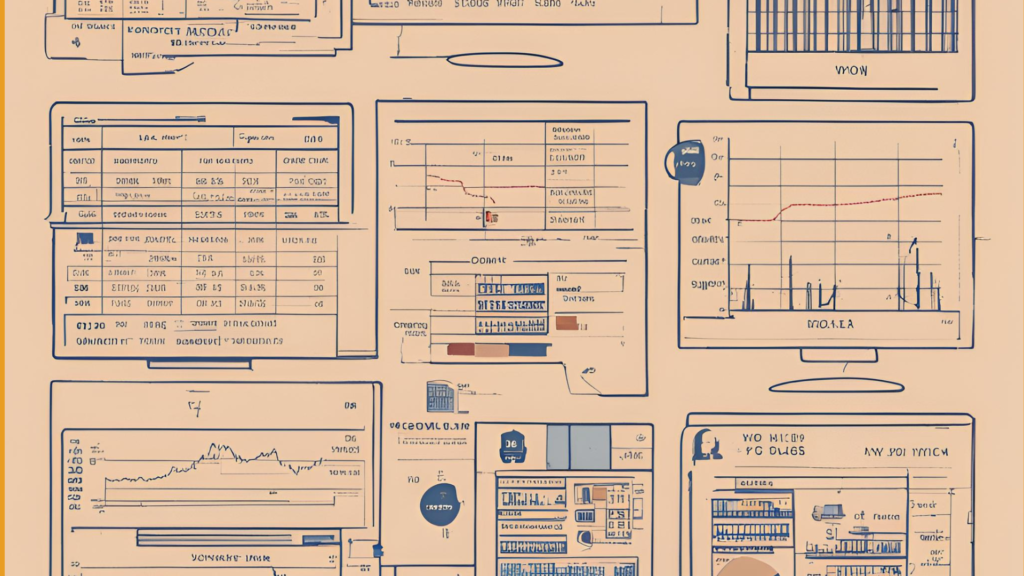The formula for profit/loss in the market is extremely simple:
Profit/Loss = (Selling Price – Purchase Price) * (Trade Volume).
That is, buy low, sell high, and pocket the profit. Strictly speaking, this amount should also be divided by the duration of the trade. However, this has nothing to do with the profit or loss itself; rather, it provides an efficiency metric.
The variety of market instruments allows for deviation from the standard order of operations. You don’t necessarily have to buy first and then sell; you can do the opposite—sell first and then buy. And you don’t need to worry about how exactly this happens. Moreover, you can buy or sell volumes that are significantly smaller or larger than your deposit size. This is called capital management, and in my opinion, this part is predominant for successful trading on the stock exchange.
Let’s get back to orders. Traditionally, there are two types of orders in the market: market and limit orders. With the advent of MetaTrader, instead of market and limit orders, the terms immediate execution and pending order appeared. Limit orders allow you to buy/sell an instrument at a specific price, i.e., the price you have planned. Thus, two queues of orders are formed in the market: a buy queue and a sell queue. The place where all orders gather is called the order book. By using limit orders, you can execute market operations at desired prices. The downside of such an order is that the price may move in your favor without filling your order if your price is not deemed attractive, leaving the order unfilled. To avoid this, there is a market order. The order is executed immediately for the entire volume you have. But in this case, you do not control the price. Not at all. There are metrics like liquidity and volatility of the instrument, which allow you to estimate the possible deviation from the desired price or the percentage of unfilled orders.
All of this information is available on the internet and is certainly not a life hack—it’s just a necessary introductory part. Now let’s focus on complex orders. Initially, orders allowed for simple linking. An if-done order implies the execution of the next order if the previous one is executed. Example: If a limit order to buy gold at 2300 is executed, then place a stop order at 2200. A more complex link, OCO (order cancel order), implies canceling an already placed order if one of the two placed orders is executed. Example: If my stop order to sell EUR/USD at 1.0860 is triggered, cancel the buy order at 1.10.
Combining if-done and OCO allowed for constructing a chain of almost any complexity for a trading session. But technology evolved, and first, orders started to appear on charts, allowing their changes by simply moving the line from one place to another. Though I am conservative and don’t like this method. It always seems that something might not transmit properly, and the order on the chart will move, but not change on the exchange.
From my point of view, the breakthrough was the ability to place take profit and stop loss orders from the executed order by specifying the number of points needed rather than the price. Several platforms offer this feature, and one of the most accessible is TradingView. This feature effectively eliminated the need for both if-done and OCO orders.
However, there is one type of order that is almost unknown in the retail market. I believe it was created as a way to combat spread widening during news releases to avoid accidental stop order triggers. It is called either stop if bid/stop if ask or use bid/offer stop loss.
A regular stop-loss order is triggered after at least one transaction occurs at the price you specified in the stop-loss. For example, if you set a stop order to sell gold at 2430, and the quotes in the order book are currently 2429-2421, your stop order may not trigger if there was no transaction at or below 2430. In this case, it is very important to work with the right broker who provides you with direct market quotes without any hidden fees or shifts. This can only be verified in practice.
At the time of news releases, the spread can widen significantly, and instead of a one-point spread, you might see spreads of 20, 30, or even 50 points. However, as a rule, the spread, let’s say, does not cross the middle line of all expanding quotes. For this case, stop if bid/stop if ask or use bid/offer stop loss orders were created.
A support level is considered broken if at least one purchase occurs at or below the support price; similarly, a resistance level is considered broken if at least one sale occurs at or above the resistance price. During news releases, despite the spread widening, the support or resistance levels are often not broken. Such stop if bid/stop if ask or use bid/offer stop loss orders protect against accidental stop order triggers. The downside is that if a stop order is triggered, you get a price worse than the set price by the spread amount. This needs to be taken into account when using this order. However, in highly liquid markets, significant slippage is unlikely, and the benefits of avoiding false triggers outweigh the possible higher loss.
Best regards.



